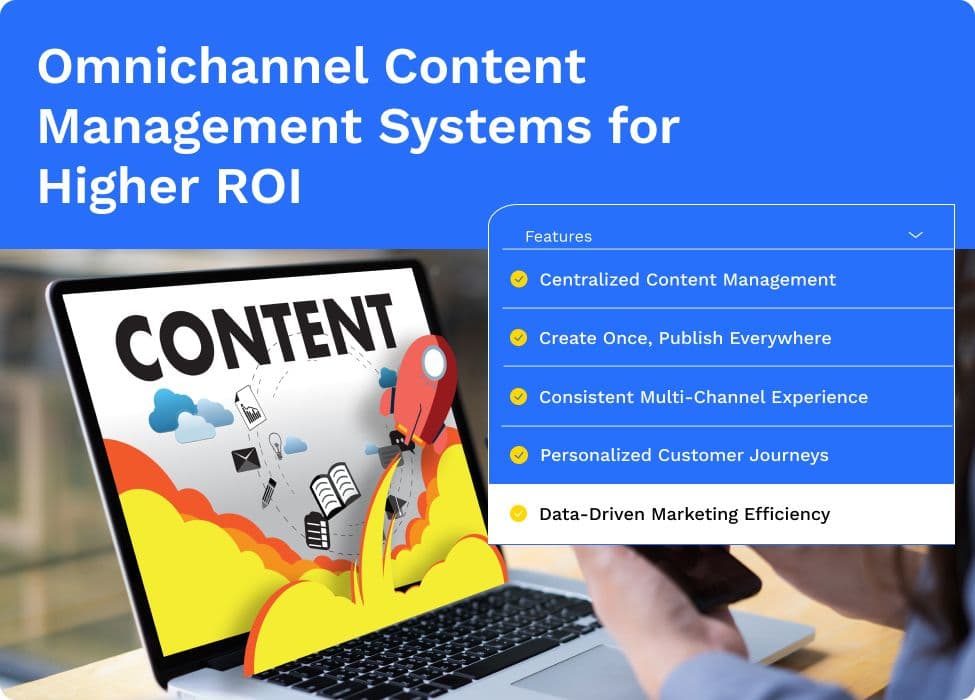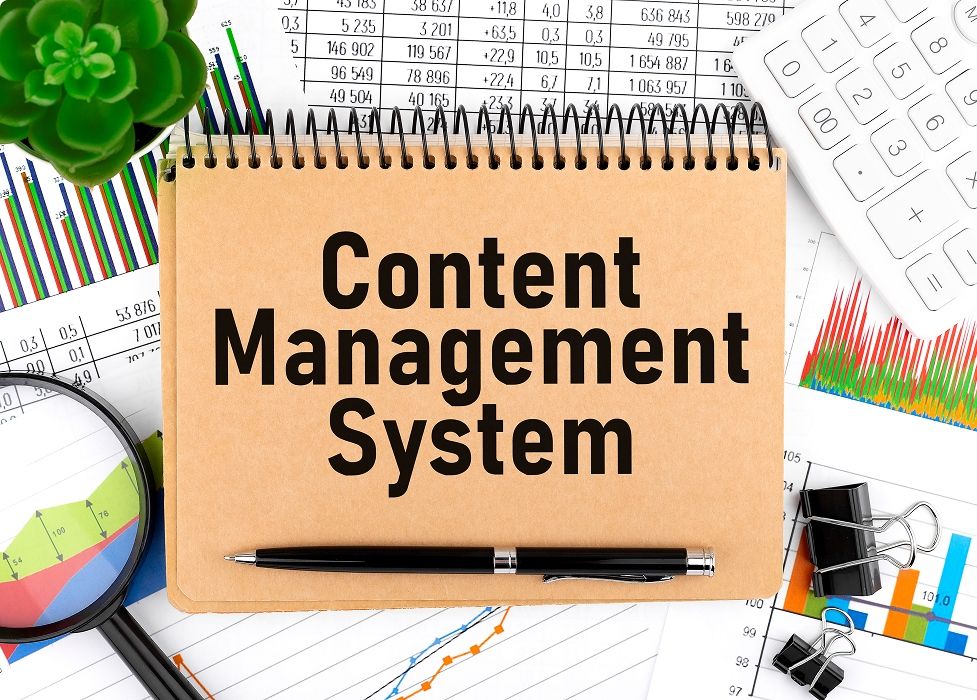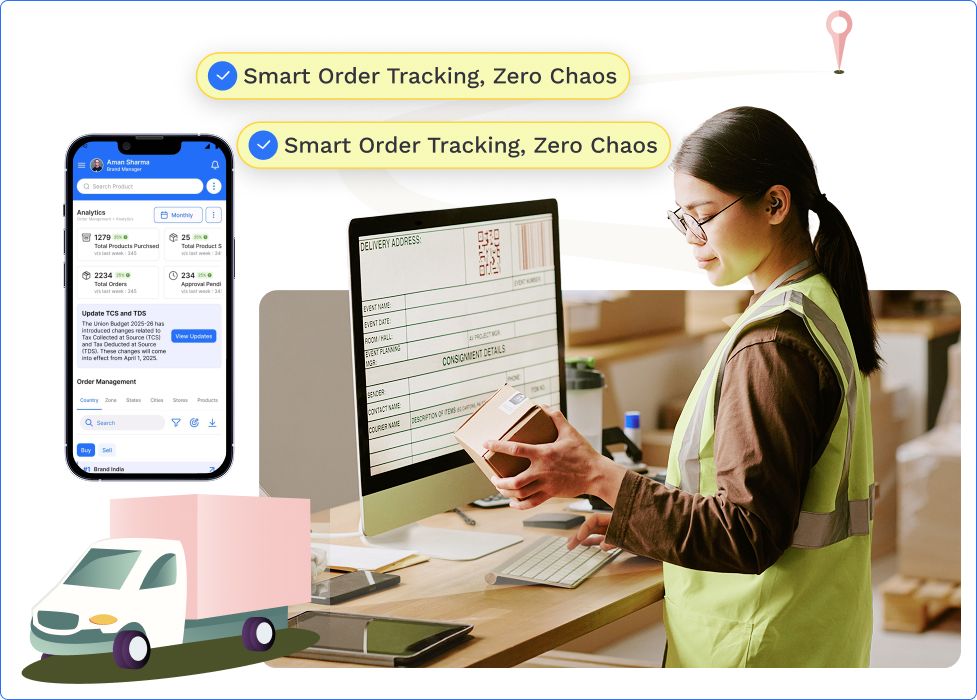Omni Channel
Omnichannel Content Management System for Higher ROI
Fri, 31 Oct 2025 11:30:09 GMT
Speak to our Hyperlocal Expert

An omnichannel content management system is a centralized platform that enables businesses to create, manage, and deliver consistent, personalized content across all digital and physical channels, ensuring seamless customer experiences and higher marketing ROI.
In today’s competitive digital landscape, customers expect unified and personalized interactions wherever they engage, from websites and mobile apps to social media, IoT devices, and in-store displays. Studies show that 73% of consumers use multiple channels during their buying journey, and maintaining brand consistency can increase revenue by up to 23%.
However, traditional CMS platforms are no longer equipped to handle this level of complexity. They often create content silos, slow down workflows, and limit personalization. Modern omnichannel CMS platforms solve these challenges by centralizing content creation and enabling teams to create once and publish everywhere.
Built on API-first and headless architectures, these systems help brands deliver real-time, relevant content across every touchpoint, improving engagement, reducing operational costs, and maximizing ROI. In this blog, we will explore what omnichannel content management involves, why it matters, its key features and benefits, and how the right system can future-proof your content strategy.
What Is an Omnichannel Content Management System?

An omnichannel content management system (CMS) is a centralized platform that enables businesses to manage and distribute content across multiple customer touchpoints in a unified way. It ensures consistent messaging and personalized experiences, whether customers engage through a website, mobile app, or physical store.
Unlike multichannel systems that operate each platform separately, an omnichannel CMS keeps all channels interconnected. This means customers can switch between devices without losing context, creating a smooth and continuous experience throughout their journey.
Built on a headless, API-driven architecture, it stores all content in one place and delivers it dynamically to different platforms. Features like modular content design, reusable components, and rich metadata make it easier to update and personalize content. Studies show that businesses adopting omnichannel strategies experience up to an 80% increase in in-store visits, highlighting its impact on engagement and ROI.
Read Also - Hyperlocal Content Management System: Powering Retail Brands
Why Omnichannel Content Management Systems Are Critical for ROI
An omnichannel content management system eliminates the high costs of content duplication and fragmentation by allowing teams to manage all assets from a single source. Instead of recreating content for every channel, businesses can update it once and deploy it everywhere, saving both time and resources.
Centralized content management ensures faster updates, consistent branding, and better version control. This efficiency not only reduces operational costs but also helps marketing teams deliver fresh, accurate content across all customer touchpoints without delays.
By enabling personalization and unified analytics, omnichannel CMS platforms allow businesses to track user behavior across channels and optimize campaigns based on performance data. The result is improved targeting, higher engagement, and measurable ROI growth.
Key Features of an Omnichannel Content Management System to Boost ROI
An Omnichannel Content Management System (CMS) comes equipped with powerful features that streamline workflows, enhance personalization, and drive higher ROI.
Key features include:
1. Content Modeling & Modular Content
Create reusable content blocks to save time and ensure consistency across all channels.
2. API-First / Headless Delivery
Deliver content seamlessly across web, mobile, IoT devices, kiosks, and more.
3. Omnichannel Content Orchestration
Manage and distribute content from a single platform for a unified brand experience.
4. Personalization & Contextualization
Deliver targeted content based on user behavior, location, and preferences.
5. Workflow Automation & Role-Based Access
Simplify approvals, publishing, and collaboration with secure access controls.
6. Integration Capabilities
Connect easily with CRM, DAM, analytics, and marketing automation tools for cohesive operations.
7. Versioning & Rollback Support
Track content changes, preview across channels, and restore previous versions when needed.
8. Scalability & Performance Optimization
Ensure fast, reliable content delivery with caching and CDN support.
Core Elements of a Successful Omnichannel Content Management Strategy
A well-defined omnichannel content management strategy helps businesses connect every customer interaction into one cohesive experience. It’s about managing content smartly - not just across channels, but through a unified system that supports flexibility, personalization, and growth.
1. Centralized Content Hub
Keep all content assets in one place to maintain brand consistency, simplify updates, and reduce duplication across teams and locations.
2. Smart Content Distribution
Deliver content automatically to websites, apps, and other touchpoints using APIs, ensuring timely and accurate publishing everywhere.
3. Personalized Experiences
Use audience insights, preferences, and behavior to deliver content that feels relevant to each customer’s context.
4. Structured Content Framework
Organize your content with clear taxonomy and metadata so it’s easy to manage, search, and repurpose across different platforms.
5. Journey-Driven Planning
Map content to every stage of the customer journey to build stronger engagement from discovery to purchase.
6. Performance Tracking and Refinement
Measure engagement, analyze performance, and continuously fine-tune your content approach for better ROI.
Headless CMS vs Omnichannel Content Management Strategy
A Headless CMS separates the front-end from the back-end, allowing flexible content delivery via APIs. An Omnichannel CMS builds on this foundation by connecting multiple platforms, tools, and touchpoints to deliver a consistent, personalized experience across all channels.
Aspect | Headless CMS | Omnichannel CMS |
Architecture | Decoupled via APIs | Built on headless with multi-channel orchestration |
Content Delivery | Delivers to web or app | Delivers across web, mobile, IoT, and in-store |
Integration | Limited to digital fronts | Connects with CRM, DAM, analytics, and marketing tools |
Personalization | Channel-specific | Unified, cross-channel personalization |
Best For | Developer flexibility | Scalable, brand-wide experiences |
How to Select the Right Omnichannel Content Management System
Choosing the ideal omnichannel CMS requires evaluating both short-term needs and long-term scalability. Consider these key factors before making your decision:
1. Total Cost of Ownership
Include licensing, development, and infrastructure expenses for a realistic investment view.
2. Tech Stack Compatibility
Ensure seamless integration with your current systems and flexibility for future upgrades.
3. Vendor Support & Ecosystem
Look for active community support, reliable vendor assistance, and partner integrations.
4. Security & Compliance
Verify strong data governance, access controls, and adherence to industry regulations.
5. Proof of Concept
Test capabilities through a pilot project before full-scale deployment to minimize risks.
Read Also - How Dynamic Content Management Tool Drives Hyperlocal Sales
Which Content Management Systems Offer the Best ROI for Omnichannel Marketing?

When choosing a CMS for omnichannel marketing, ROI depends on scalability, integration capabilities, and personalization features. The best systems go beyond publishing - they connect channels, automate workflows, and measure engagement in real time.
Leading platforms like Sekel Tech offer powerful ROI through STP automation, real-time sales conversion analytics, and omnichannel consistency. What sets Sekel apart is its ability to link digital discovery with physical footfalls, giving businesses both online visibility and offline conversions.
Read Also - Exploring 10 Best Omni Channel Marketing Platforms in 2025
Best Content Management Systems for Omnichannel Marketing ROI

The best omnichannel content management system for ROI combines content efficiency, local personalization, and advanced analytics. They allow brands to create once and publish everywhere - web, app, store locator, or social media - without losing context or control.
Sekel Tech’s Omnichannel CMS delivers measurable returns by:
- Reducing content duplication and manual effort
- Driving localized engagement with hyper-personalized content
- Enhancing customer experience through real-time updates and insights
- Connecting online and offline journeys for higher conversion rates
With Sekel, retailers and brands gain a complete omnichannel content ecosystem that improves operational efficiency and maximizes ROI.
How Sekel Tech’s Omnichannel CMS Powers Digital Discovery and Local Impact

Unlike standard CMS platforms that focus only on content management, Sekel Tech’s omnichannel content management system connects digital visibility with real-world conversions. It is designed to streamline operations, personalize user experiences, and drive measurable ROI across every touchpoint, both online and offline.
1. Unified Content Control: Manage websites, microsites, and store locators from one dashboard to maintain consistent branding across all locations.
2. Google Business Profile Automation: Update hundreds of listings instantly with accurate offers, visuals, and contact details.
3. Social Media & Campaign Management: Plan, publish, and localize campaigns with store-level targeting and personalization.
4. AI-Driven Personalization: Deliver tailored experiences based on location, behavior, and preferences to enhance engagement.
5. Analytics & Insights: Monitor performance across every channel, including search, maps, social, and in-store interactions.
6. Workflow Efficiency: Automate publishing, schedule updates, and ensure brand consistency through role-based controls.
Sekel Tech’s omnichannel content management system is not just a content tool but a growth engine that bridges online discovery with offline footfalls, empowering brands to engage, convert, and scale seamlessly.
Watch the video to see how Sekel Tech empowers brands and retailers to manage content, engage locally, and drive ROI through a unified omnichannel platform. "What is Sekel Tech and How Does It Empower Brands & Retailers?"
Common Challenges in Omnichannel Content Management and How Sekel Tech Overcomes Them
Managing omnichannel content can be challenging when systems, teams, and processes are not aligned. Sekel Tech’s platform is designed to simplify this complexity and deliver seamless execution across every channel.
1. Legacy Systems and Data Silos: Sekel integrates effortlessly with existing systems, breaking data silos and unifying all content sources under one intelligent dashboard.
2. Resistance to Change: With an intuitive interface and role-based access, Sekel encourages adoption across teams, reducing learning curves and operational resistance.
3. Integration Complexity: The platform’s API-first design ensures smooth connectivity with CRM, ERP, analytics, and marketing tools for effortless automation.
4. Governance and Role Management: Central rule-based controls and approval workflows maintain brand integrity while empowering local teams with flexibility.
5. Consistent User Experience: Sekel ensures brand consistency across web, mobile, and in-store experiences, adapting content to suit every channel.
6. Balancing Speed and Control: Automated workflows and real-time publishing help brands move fast without compromising accuracy or compliance.
With Sekel Tech, businesses overcome the operational and technical barriers of omnichannel content management, achieving faster execution and stronger customer engagement.
Managing multiple stores, listings, and content is now simpler than ever. Watch how Sekel Tech’s content management system streamlines everything from one dashboard. "Multiple stores manage करना अब होगा super easy!"
According to a recent Economic Times CIO article, brands that effectively integrate their online and offline strategies are seeing higher engagement and conversions. This shift from “bricks to clicks” highlights why omnichannel content management is crucial for modern marketing success. Read the full article on Economic Times.
Frequently Asked Questions (FAQs)
1. What are the three components of CMS?
The three key components of a CMS are content creation, content management, and content delivery. Together, they help teams easily create, organize, and publish content across multiple digital platforms.
2. What are the four pillars of omnichannel?
The four pillars of an effective omnichannel strategy are integration, consistency, personalization, and data-driven insights. These ensure customers receive a seamless and unified experience across all touchpoints.
3. Is Omni a CRM system?
No, Omni is not a CRM system. “Omni” refers to omnichannel, a strategy that connects multiple channels for a unified customer experience. However, an omnichannel CMS can integrate with CRM tools for better personalization and engagement.
4. What is omnichannel content?
Omnichannel content is centrally managed and distributed across all customer touchpoints, ensuring consistent messaging, branding, and personalization across web, mobile, social, and in-store experiences.
5. What is B2C in business?
B2C (Business-to-Consumer) refers to businesses that sell products or services directly to end consumers, such as retailers, e-commerce brands, or service providers.
Conclusion: Driving ROI Through Smarter Omnichannel Content Management
In today’s competitive landscape, an omnichannel content management system isn’t just about publishing content; it’s about creating connected experiences that drive measurable results. A well-structured CMS helps brands unify digital and physical journeys, reduce duplication, and deliver personalized engagement at scale.
Among the top-performing systems, Sekel Tech’s omnichannel content management system stands out for bridging online discovery with offline conversions. By enabling centralized control, hyperlocal personalization, and real-time insights, Sekel empowers retailers and brands to achieve higher visibility, stronger engagement, and better ROI.
Ready to transform your omnichannel strategy?
Explore how Sekel Tech’s Content Management System can power your brand’s digital discovery and local impact.
Share
Similar Blogs
Loved this content?
Sign up for our newsletter and get the latest tips & updates directly in your inbox.
There’s more where that came from!